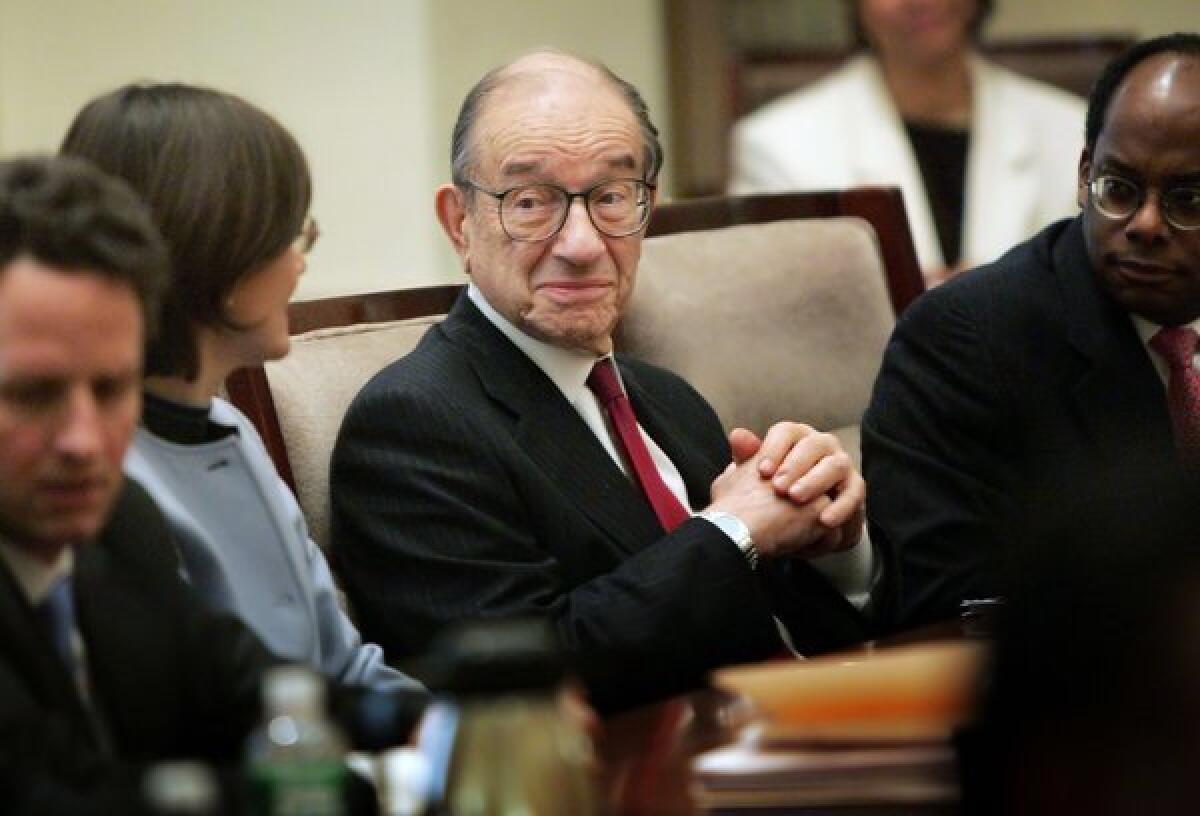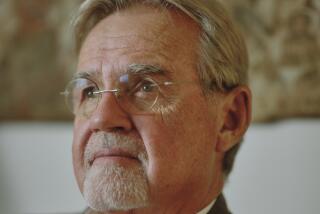What does Alan Greenspan have in common with Michel Houellebecq?

- Share via
Consider Alan Greenspan: He’s the economist appointed chairman of the Federal Reserve in 1986 by Ronald Reagan, serving for 20 years and four presidents. Born in New York in 1926, Greenspan got a doctorate in economics and went to work on Wall Street before joining the Fed.
What could he have in common with Michel Houellebecq, the award-winning bad boy of French letters? With his frank depictions of sex, bleak perspective, offensive statements about religion and drunken overtures toward female interviewers, Houellebecq is a controversial libertine. The Paris Review writes he is “hailed as a brilliant realist in the great tradition of Balzac or dismissed as an irresponsible nihilist.”
What could these two have in common?
A book title.
On Tuesday, the Penguin Press will publish “The Map and the Territory” by Alan Greenspan. In 2012, Knopf published “The Map and the Territory” by Michel Houellebecq.
This is perfectly acceptable -- book titles can’t be copyrighted, so we could have a dozen more books called “The Map and the Territory” published before the decade is out. Although it’s not exactly recommended.
Because book buyers can get confused. And with these two books, well, confusion may lead to great surprise. Houellebecq’s “The Map and the Territory” won France’s highest literary award, the Prix Goncourt, causing outrage in some quarters. It’s a novel built around a successful but antisocial photographer and a writer named Michel Houellebecq that deals with art, isolation, a gruesome murder and death.
A far cry from Greenspan’s “The Map and the Territory,” which is, as you might expect, is about economics. Greenspan, 87, looks at risk, economic prediction and how things can go wrong. The book, subtitled “Risk, Human Nature, and the Future of Forecasting,” is, its publisher promises, “nothing less than an effort to update our forecasting conceptual grid. It integrates the history of economic prediction, the new work of behavioral economists, and the fruits of the author’s own remarkable career to offer a thrillingly lucid and empirically based grounding in what we can know about economic forecasting and what we can’t.”
How did very different books by such different writers come to share a title? I think it comes from Alfred Korzybski, the Polish-American philosopher and founder of semantics -- in talking about the difference between a description of a thing and the experience of it, said, “a map is not the territory.”
Why did they both invert the phrase in the same way? Perhaps Greenspan has spent some of his time after retiring from the Fed reading edgy French literature.
ALSO:
Ronan Farrow: Our next public intellectual
Scott Turow: ‘Amazon is trying to monopolize the e-book market’
Self-published pornographic e-books cause trouble for Amazon, Kobo
Carolyn Kellogg: Join me on Twitter, Facebook and Google+
More to Read
Sign up for our Book Club newsletter
Get the latest news, events and more from the Los Angeles Times Book Club, and help us get L.A. reading and talking.
You may occasionally receive promotional content from the Los Angeles Times.







